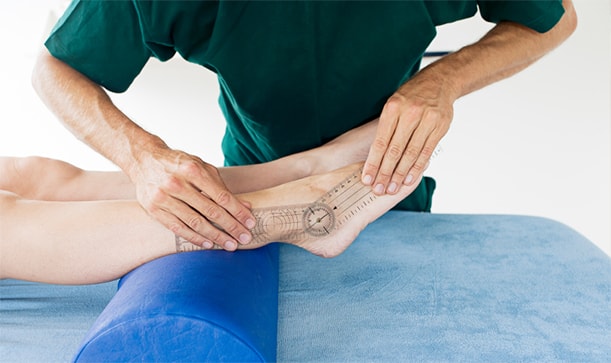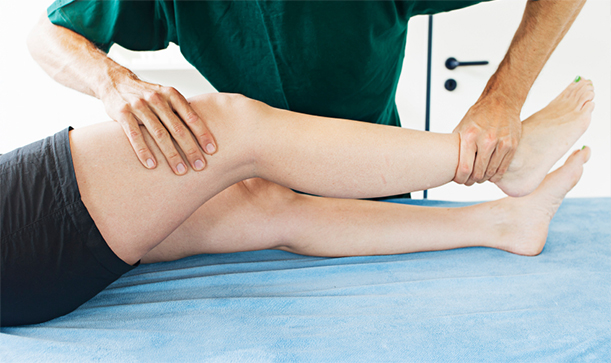CK Physiotherapy
AREAS COVERED
W7, W5, W13, Ealing, West London
57 Elthorne Avenue
Hanwell, W7 2JY
T: 020 8566 4113
M: 079 572 46185
E: info@ckphysio.co.uk
Location / Parking
We are situated in Hanwell, between Boston Manor Road and Northfields Avenue, south of the Uxbridge Road.57 Elthorne Avenue
Hanwell, W7 2JY
There are parking restrictions Mon - Fri 9-10am and 2-3pm. If you need a permit during this time please inform your therapist when you arrive. There are no parking restrictions at other times.
Opening Times
Please phone the number above during working hours to make an appointment. Our reception service will be happy to book your session.
London Underground / Bus Services
London Underground
10 min. walk from Boston Manor Tube Station.
15 min. walk from Northfields Tube Station.
Bus Service
E8, E3, E2, 207, 607, 83
Request Call Back
Our Blog
Your 12-Step Guide to Avoid Knee Pain From Ealing Physio Experts
By: BryanKelly (Psst, View author in Google Plus) Date: Oct 8th, 2018Knee pain affects 30% to 50% of all runners, making it one of the most common problems in the world of running. Below are some simple measures you can take to help prevent knee pain and some steps to take if you sustain a knee injury while running.

Identifying the Initial Symptoms of a Knee Pain
Knee pain can cause a variety of symptoms depending on the type of injury you have. The Mayo Clinic outlines some of the most common symptoms associated with knee pain:
• Stiffness and swelling in the knee area
• Redness and/or warmth to the touch
• Inability to straighten the knee fully
• Popping and crunching sounds
In addition to these symptoms, people with knee pain may experience feelings of weakness or instability in the knee area. If you notice any of these symptoms, schedule an appointment with a medical professional.
What can you do to prevent knee pain?
Knee pain usually does not arise by accident. It is often the result of overusing your knees or failing to allow sufficient time for your body to recover. In other cases, knee pain can result from prolonged running on hard surfaces. Here are six steps that can help you prevent knee pain.
1) Buy the proper shoes
Investing in a good pair of running shoes can work wonders for a runner. You can find a good pair of running shoes by visiting a running store and having your feet evaluated. A footwear expert can recommend the best running shoe for you based on your height, weight, posture, and stride. A footwear specialist may also suggest insoles to help provide added cushioning.
2) Try to run on soft surfaces
“Tarmac and rubber are better choices than concrete and asphalt because they are less taxing to joints.” - Earl Reidlen, Health Nutrition
Concrete and asphalt surfaces are hard and can lead to stress on the knees. Running on tarmac, rubber or turf can reduce this stress and help prevent knee pain. Physicians with the Women's Sports Medicine Center in New York City recommend staying away from concrete while running.
3) Increase your mileage gradually
Trying to build up your mileage too quickly can lead to knee discomfort. In general, try to limit your mileage increases to no more than 10% each week.
4.) RICE for prevention of strains and pains
RICE stands for:
R - Rest
I - Ice
C - Compression
E - Elevation
Let your feet take its rest and apply a cold compress such as a bag of ice to the knee to retain its used energy. You can also use frozen vegetables like peas if there is no ice available. Afterwards, wrap your knee with a compression bandage but not too tight to allow circulation. Whilst resting, keep your feet elevated.
5) Allow time to recover
A runner's body - especially the knees - needs time to recover. Allow at least one day of rest each week if you are a seasoned runner. If you are a casual runner or just starting to run, plan to run no more than every other day.
6) Strengthen your calves and hamstrings
"Knee strengthening exercises are one of the best ways to cure knee pain. People who do them have less pain, recover quicker from injuries, function better and have less chance of problems recurring in the future." - Chloe Wilson, Knee Pain Explained
Strengthening your calves and hamstrings can help prevent knee pain by helping you develop good foot motion or "pronation." You can choose from a variety of strengthening exercises to help improve your performance and prevent knee pain.
What should you do if you experience a knee injury?
A knee injury can be sudden and acute or can develop over time. Regardless of the factors that caused your injury, you need to follow the proper steps in order to enjoy a swift recovery. Below are six steps you should take if you sustain a knee injury.
1) Stop running immediately
Knee injuries to runners can occur during a training run or in the middle of a race. If you experience knee pain while you are running, stop running right away. Do not try to "run through the pain or make it to the finish line of a race or you could make your injury worse.
2) Seek medical attention
This step is especially important if your knee pain is severe. Failure to seek help could result in long-term damage to your knee. If you are unable to move, call 911 or request help from a bystander. Prompt medical care can be the difference between a minor injury and a devastating one.
3) Get a professional review and evaluation
A professional evaluation by a qualified medical professional is essential in treating your knee pain. You will better understand what is causing your pain and how you can help your knee to heal.
4) Visit a trained physiotherapist
Physiotherapy is an effective treatment for joint injuries and knee pain. It is a popular form of treatment because anyone can receive physiotherapy and it is non-invasive. The key to a positive experience is to seek a highly trained certified physiotherapist who offers the following:
• A holistic approach to your knee pain
• Years of experience treating runners
• A desire to empower you to participate in your care
5) Do not try to resume running too quickly
One of the biggest mistakes runners make when recovering from a knee injury is trying to resume their running routine before they are fully healed. Follow your doctor's recommendations and ease back into your running routine as directed.
6) After you heal, focus on prevention
Once you have conquered your knee pain, make sure that you do not repeat the behaviours that caused your pain to develop in the first place. Follow the six steps outlined above to help prevent your knee pain from recurring.
Find Out How a Physiotherapist Can Help You
Knee pain is one of the most common problems affecting runners. Fortunately, you can prevent knee pain by following the simple steps outlined above.
To find out how we can help you avoid knee pain or conquer your existing knee pain, we invite you to contact us. We look forward to helping you resume your running routine as quickly as possible.





